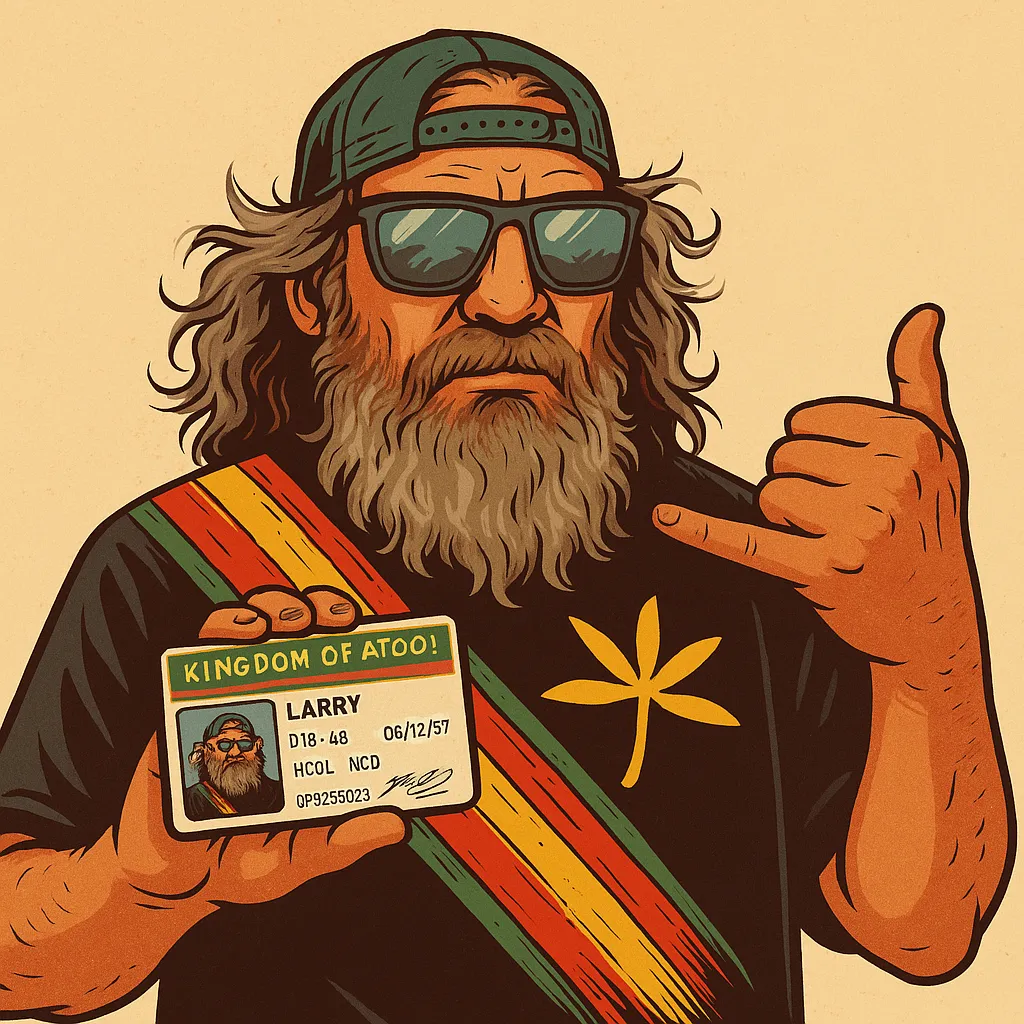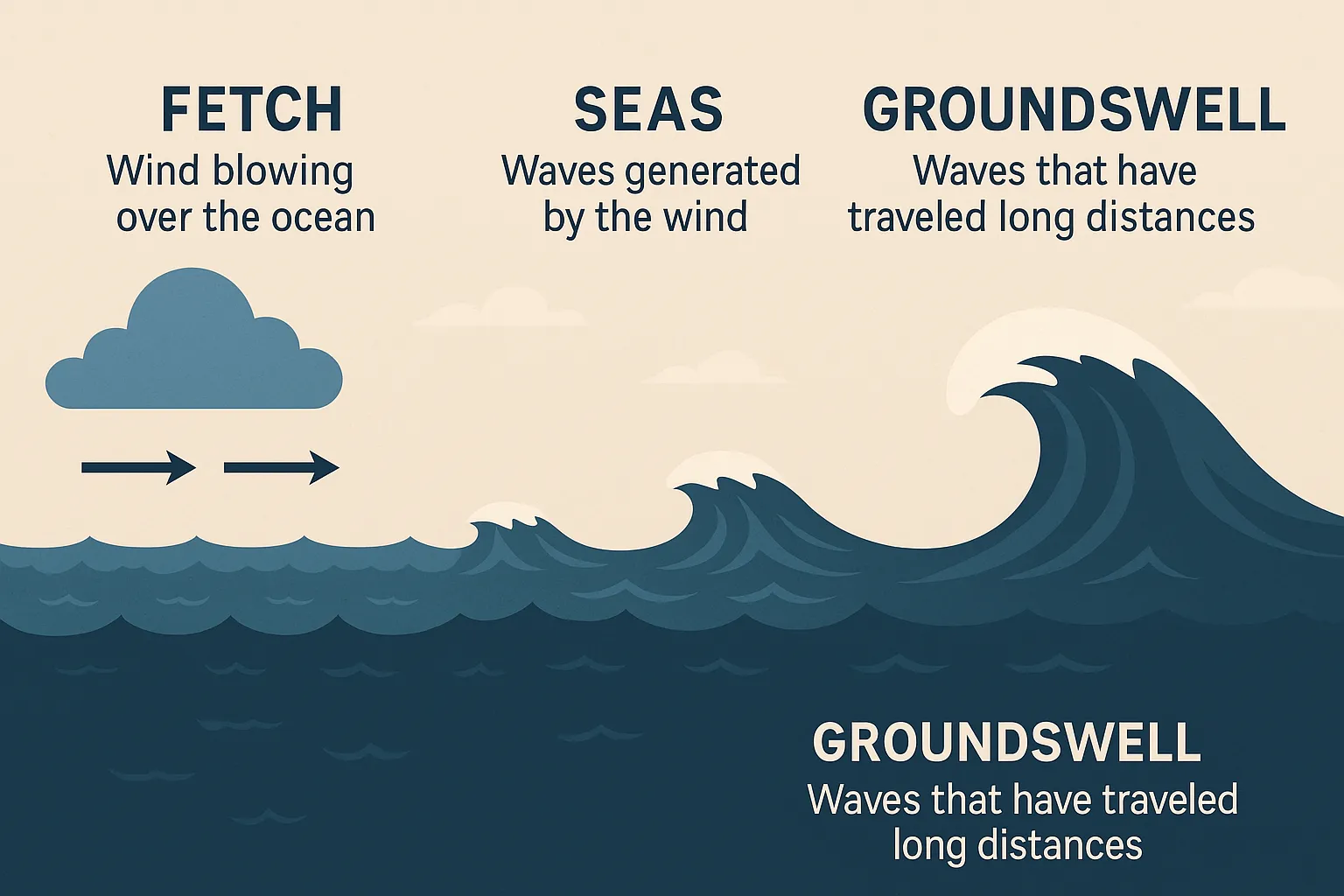🌊 Every Wave Is a Whisper from a Distant Storm
By Jack Turner | Field Dispatch from Tune Into Tomorrow
“The ocean speaks. But only if you shut up long enough to listen.”
— Brother Larry, U.S. Coast Guard (1983–1993)
Part I: The Breath of the Sea – What Is FETCH?
Let’s start where all great stories begin: with a gust of wind.
FETCH is the invisible hand that sets everything in motion. It’s not just a breeze flicking your hair on the beach. No, this is raw atmosphere charging over the ocean’s surface—sometimes 300, even 800 miles wide. Imagine a warhorse galloping full speed over the sea, kicking up spray and setting tiny ripples into motion.
That’s FETCH. Wind over water. Distance over time. Energy transferred across a fluid skin.
Oceanographers define FETCH as a geographic distance over which wind blows uninterrupted. And the longer it blows, the more energy gets passed into the ocean.
But here’s the kicker—the ocean remembers. Every ripple stores that energy. Those ripples start forming micro-waves. Then the wind keeps pushing. Stacking. Amplifying. Welcome to the next chapter.
Part II: SEAS – Choppy, Local, and Always a Little Angry
The little ripples? They become SEAS.
These are the waves surfers groan at. Wind-driven. Chaotic. Often short-period. Locally born and raised. If FETCH is the act of creation, SEAS are its messy adolescence.
When you see blown-out conditions on the east side of Kauaʻi during the trades, you’re looking at SEAS in real time. They lack rhythm. They bounce around like teenagers at a punk show. Good for fishing maybe. Bad for surfing. Worse for kayaking.
SEAS are constantly shifting because they’re still in the presence of the wind that birthed them. They’re short-lived and often disappear if the wind dies down. But if conditions align—if the FETCH holds and the wind blows long enough—something magical starts to happen.
The waves begin to organize. They stretch out. Grow longer in period. They clean up.
They become travelers.
Part III: GROUNDSWELL – The Long-Distance Messenger
GROUNDSWELL is where the ocean stops whispering and starts singing.
Once the wind quits, the energy doesn’t just vanish. It continues its journey, undisturbed, as a long-range, low-frequency pulse. These waves have grown up. They’re mature. Confident. Clean. They know where they’re going.
And sometimes, they travel thousands of miles.

Brother Larry once told me a swell could originate in the Bering Sea, pulse down the spine of the Pacific, and roll into Hanalei Bay six days later with the same grace it had when it left.
That’s not just a wave. That’s time made tangible.
These are the waves you wait for at Pipeline. They arrive in sets—three to seven per burst, with rhythmic breaks in between. That break, that “lull,” is your sacred window if you’re a paddler or surfer. It’s your moment to slip in, breathe, or escape.
But here’s the mind-bender. According to Larry, and confirmed by ocean science, waves in a set don’t arrive in a straight line of order. Sometimes, the first wave of the last set merges with the last wave of the first. Time folds. Frequencies cross. What looks like chaos is, in fact, symphonic interference.
Part IV: Wave Periods, Pulse Speed & Rogue Wave Theory
Here’s where it gets juicy for my fellow nerds.
The longer the wave period (the time between wave crests), the faster the swell travels and the deeper its energy reaches. A 20-second period swell travels at over 30 knots—and its energy reaches 500+ feet below the surface.
These deepwater swells are responsible for freak phenomena too—like rogue waves, where multiple swells intersect, their peaks aligning into one massive, singular wall of water.
Not every wave is created equal. Not every wave is friendly.
Part V: The Cultural Ocean – What Hawaiians Always Knew
Long before charts, buoys, and NOAA forecasts, the Hawaiian people read the ocean like a book passed down by the ancestors. They named swells. They knew which channels sent what waves, how long they’d take, and when the fish would rise because of them.
In the ancient tongue, swells had character. Some were mischievous. Some were generous. Some were deadly.
The ocean wasn’t just weather. It was ancestry in motion.
Part VI: Reading the Swell, Living by It
So what do you do with all this knowledge?
If you’re a surfer: it helps you pick your days, your breaks, and your boards.
If you’re a kayaker: it helps you live.
If you’re a scientist: it’s a map of energy transmission through the oldest medium on Earth.
If you’re a poet—or a fool like me—it’s a reminder that everything is connected. That what starts as wind in Alaska can change the fate of a fisherman in Hanapēpē. That the sea is not just water, but memory, movement, and music.
Final Word: Brother Larry’s Forecast
“Every beach has a memory. Every reef is a recorder. What you feel under your board—that’s history arriving.”
— Brother Larry
So next time you see a set roll in, don’t just count waves. Listen.
There’s a message coming to shore. It started days ago. It came from thousands of miles away. And it was meant for you.
🌀 Filed from the North Shore,
in the spray of a building northwest swell.
— Jack Turner, signing off
Let me know if you’d like this styled into a full blog-ready HTML page or formatted as a printable handout or educational PDF.

Leave a Reply